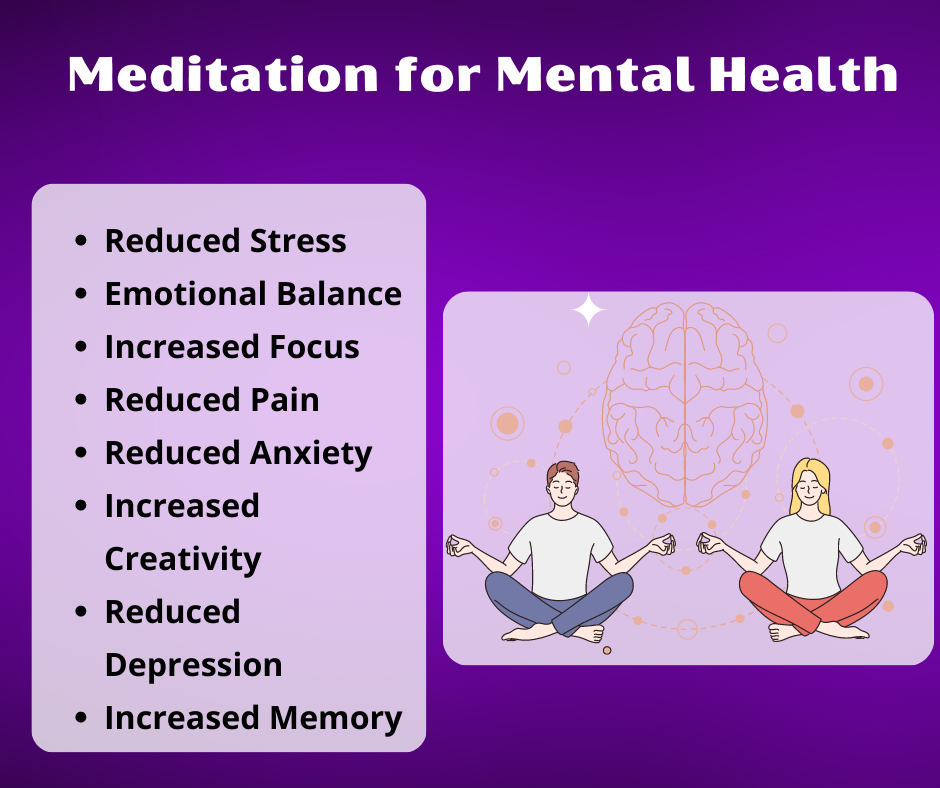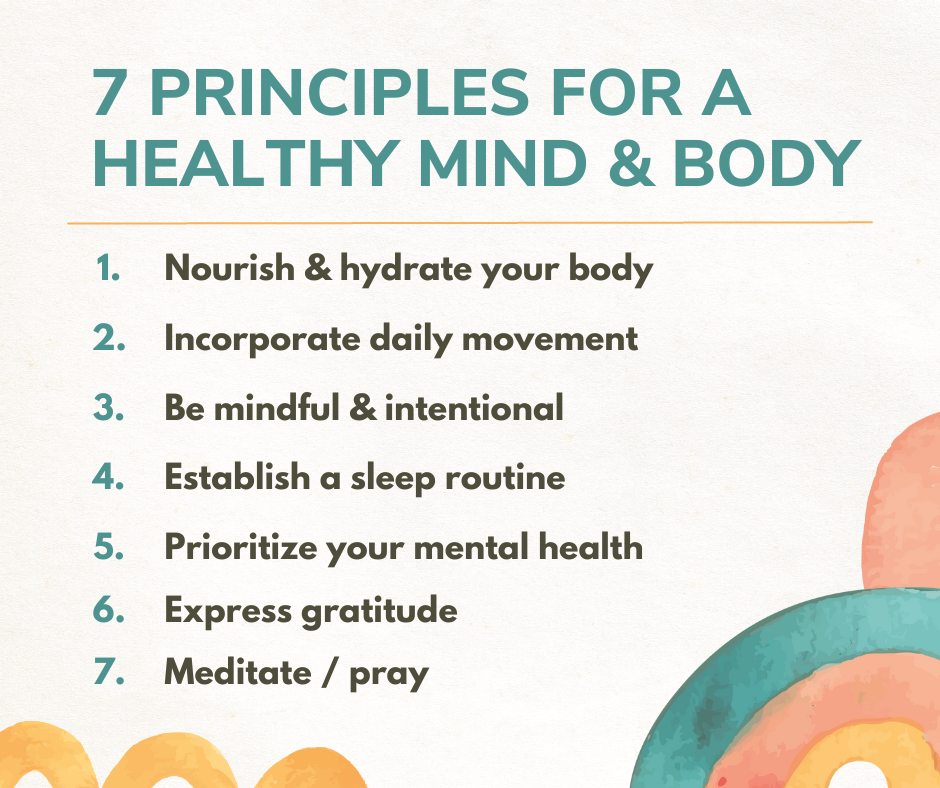There ARE ways to meditate that are easier, better suited for active minds and don’t require a lot of time or going on a pilgrimage to learn how. Keep reading to learn more.
If you’re an experienced meditator and have a strong practice – that’s terrific and I’d love to have you share comments on what you have learned and how you go to this place. Keep reading and share your experiences.
What is meditation – it’s a process or technique that’s been around for thousands of years. Its purpose is to develop awareness of the present moment. Does this sound like mindfulness to you? Guess what, mindfulness is a type of meditation.
Why meditate? Mental and Physical Health scientifically backed benefits- there are so many!!
- Decreased, depression, anxiety
- Reduced burnout
- Improves sleep – decreased insomnia
- Improved immune function
- Decreased blood pressure
- Reduced stress – lower cortisol & adrenaline – the stress hormones
- Lower cholesterol levels
- Increased production of DHEA – anti aging hormone
- Increased concentration and memory
- Improved focus and concentration
- Improved problem solving and creativity
I have found the above health benefits to be true. My focus and concentration increase. My anxiety and depression decrease. I find myself at ease and overall, more positive after meditation. When I don’t meditate, I notice stress, anxiety and feeling more blah. My focus, creativity, and passion wane if I don’t regularly meditate.
Think you can’t meditate because your active mind is busy thinking, problem solving and squireling all over during a silent meditation? Guess what, that’s normal and what our brain does. When I found out that clearing your mind wasn’t required, I was relieved and decided to give meditation a try. I had just started my coach training and wanted to be a better coach and more comfortable with the present moment.
I started out with short 5-10 minutes of guided meditation. A guided meditation helps to stay focused and allows you to follow along. I find it keeps my overactive brain focused on something.
There are many types of meditations and I’ll dive into those in my next blog. We’ll focus on guided and focused meditations.
Where do you find meditations? – Online - I use apps, you can use YouTube, or other sources. Use a search engine and you can find a meditation for whatever mood, desired outcome or style that works for you.
As a Chopra center trained instructor, I use the Chopra app. There are many other apps out there, Insight is my favorite. Some clients prefer Headspace, Calm, or Healthy Minds Program. Insight timer is my backup alternative app I use. It has loads of different types of meditations, timers, and programs to choose from.
How to start meditating?
1.Find a quiet spot where you can sit comfortably.
If you want, make a special meditation place with a comfortable chair, pillow, maybe a candle or infuser, and add anything special.
I often meditate on the couch with headphones. I have a chair, comfy blanket, infuser and special mementos and crosses in my office where I meditate as well. I even have a special meditation pillow I use when sitting on the floor.
2.Choose your length of time for meditation. 5-15 minutes is a good place to start.
Some days that’s how much time I dedicate to meditation. Sometimes, I meditate for 30minutes.
3.Choose an app or recording to listen to if you’re using a guided meditation. If you want a focused meditation - set a timer and focus/count your breath, stare at a candle, count prayer beads or listen to soothing background music.
4.Get comfortable, notice how your body feels, take some deep breaths to start and calm the mind.
5.When your mind wanders – not if – it will. That’s what our brains do – think. It’s normal and part of the practice. Don’t judge yourself or thoughts. Just let them go and return. Return to the meditation – listening to the guided, counting breath, beads, or refocus on the candle.
6.When the timer is complete, take a moment to return slowly. Stretch, take a few more deep breaths. Thank yourself and notice how you feel. Notice your thoughts and emotions.
7.Congratulate and acknowledge yourself – you did it!!
8.Bonus – decide now when you will meditate again? Set a reminder, join a free meditation program, follow a meditation instructor.
Ready to try meditation for healthy mental health? How could you incorporate this into your life for positive mental health?
Follow me on social media for more insightful questions, tips, and motivational quotes.
May you be healthy, may you be healed and may you be happy.
If you or someone you know would like support in life or business working towards healing, health and happiness, please reach out and contact me. I provide a safe place to explore your life – both personal and professional. Latest client win - habits created late last year are embedded to support them to achieve their professional and life goals!
Please comment, like, share.
Teresa – Meditating for mental health
Teresa Q. Bitner, M.Ed., PMP, PCC - Resiliency, Change and Loss Coach
Partnering with those who have been knocked down my life and want to build resiliency and move forward and live a bold life.
[email protected]
www.boldfulfilledlifecoach.com
Author of:
• Soul Love: How A Dog Taught Me to Breathe Again
• The First Days Widow Journey
• Explorations into the Being and Doing of Coaching: A collection of voices, insights and wisdom from Austin area coaches



 RSS Feed
RSS Feed